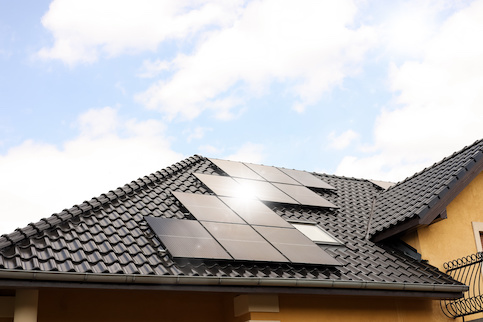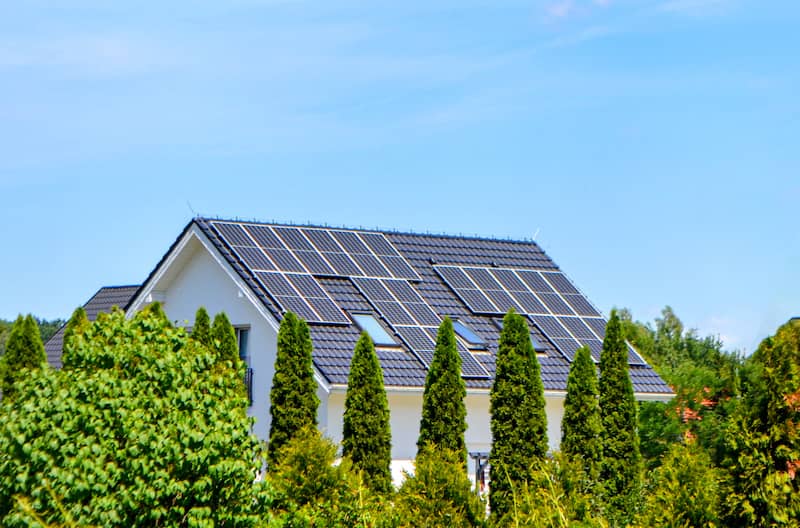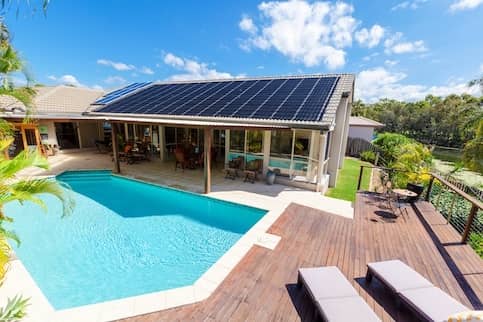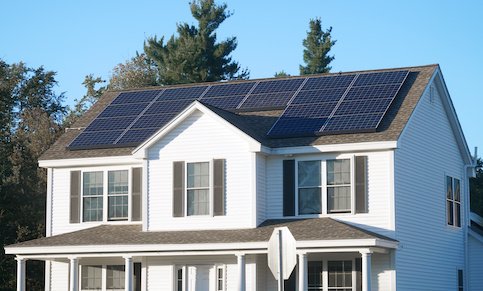With traditional energy costs on the rise, it’s natural to start looking at other viable energy sources. And the good news is that the future of solar energy is bright. If you are looking for a way to slash energy costs while going green, solar energy may be an increasingly useful option.
Where Is The Future Of Solar Energy Headed?
At some point in the recent past, the idea of turning the sun’s energy into a viable source of electricity for household use seemed far-fetched. But now that the solar energy industry is more widely accepted, what happens next?
Increased Reliance On Solar Energy
In recent years, the use of solar energy has increased significantly.
For example, according to energy.gov, net solar energy production increased from 1,121 gigawatt-hours (GWh) in 2010 to 90,891 GWh in 2020. And that positive trend has continued. In 2021, 39% of all new electricity-generating capacity added in the U.S. was solar.
As of 2022, 3% of the electricity generated in the U.S. comes from solar energy, according to the U.S. Energy Information Administration. But some studies suggest that the country could have 90% of its energy needs met by clean energy such as wind and solar.
Lower Overall Costs For Solar Technology
Converting solar energy into usable electricity involves sophisticated technology and storage systems. Although the current technology is functional, the industry is constantly working to create a more efficient and cost-effective way of producing usable electricity.
The solar industry has seen a large influx of federal funding to back projects that will lower the costs of solar technology. If the funding has its intended effect, the cost of solar will be cut in half by 2030. With more affordable access to solar technology, more households can harness the benefits of solar energy.
More Affordable Solar Panels
If you are considering going solar, the costs of solar panels will impact your decision. Although the exact costs will vary based on your situation, most households can expect to pay around $20,000.
In the last decade, the cost of solar panels has declined significantly. According to Solar Energy Industries Association (SEIA), the average price of a residential system cost around $40,000 in 2010. As the technology behind solar energy continues to improve, solar panels for homeowners should become increasingly affordable.
No Increase In Electricity Costs
If the technological advances continue at their current clip, the U.S Office of Energy Efficiency and Renewable Energy anticipates that electricity prices will not increase through 2035. That’s if the goal of 95% decarbonization of the electric grid is achieved by 2035.
More Jobs In Solar Energy
The increasing interest and access to solar energy have led to more and more jobs in the field. As of 2021, more than 10,000 companies employ over 255,000 Americans across all 50 states.
According to the U.S. Bureau of Labor Statistics, more jobs are expected in the coming decade. Between 2021 and 2031, the BLS expects solar photovoltaic installer jobs to grow by 27%. But other job classes, like administration and sales, may be added to the solar industry as the country adopts this form of green energy.
See What You Qualify For
Buy A Home
Discover mortgage options that fit your unique financial needs.

Refinance
Refinance your mortgage to have more money for what matters.
Tap Into Equity
Use your home’s equity and unlock cash to achieve your goals.
How We Reach The Future Of Solar Energy
The future of solar energy is enticing. After all, the idea of stable energy costs from a renewable energy source is an ideal mix. But reaching a future where solar energy is heavily relied on won’t happen overnight. Here are a few things that must happen on the way to a bright future.
Increasing Tax Incentives For Homeowners, Investors And Businesses
Although the costs of installing solar energy are decreasing, paying several thousand dollars upfront is a dealbreaker for many households. With this problem in mind, the government has created clear tax incentives for making the switch.
In the recent Inflation Reduction Act, many considering solar were happy to see residential energy credits for homeowners. For those installing solar panels, this will lower the overall cost. By removing a financial barrier, more homeowners who were on the fence about solar will make the switch.
Making Solar Technology More Affordable And Accessible
Although solar energy can help a household save on their electricity bills, the upfront installation is an impediment for many. For more widespread adoption of solar energy, the industry will need to continue improving technology to push costs lower.
Lower out-of-pocket costs will help many households move forward with their solar plans.
Increasing Solar Deployment
In order to meet ambitious decarbonization goals, it’s necessary for the industry to increase the deployment of solar energy systems. Although more households may be interested in adopting solar, the industry may need to grow its capacity in order to meet increasing demand.
The U.S Office of Energy Efficiency and Renewable Energy would like to see a significant acceleration in solar deployment. The office has set a goal of deploying 30 GWs of solar capacity per year.
Improving Storage And Transmission
It’s one thing to turn the sun’s energy into electricity. But it’s another to store and transmit this energy to the consumer.
The production of usable electricity from solar energy is a major accomplishment. But the industry remains focused on improving the storage options for this energy. Plus, the industry is looking to improve the transmission of produced solar energy.
Continuing To Develop New Solar Technology
Modern solar technology is useful. But continuing research into technology improvements is necessary for the long-term future of solar energy use.
Of course, improving the basic mechanics of how solar panels work is one important task. But it’s also important to increase the viable lifespan of solar panels. Otherwise, these hard-to-recycle components end up in landfills at the end of a short lifespan, which is another problem for the industry to solve.
The Bottom Line: The Future Is Solar Panels
As solar technology improves, the adoption of solar panels is likely to increase. The growing solar energy means a bright future for renewable energy.

Sarah Sharkey
Sarah Sharkey is a personal finance writer who enjoys diving into the details to help readers make savvy financial decisions. She’s covered mortgages, money management, insurance, budgeting and more. She lives in Florida with her husband and dog. When she's not writing, she's outside exploring the coast. You can connect with her on LinkedIn.












